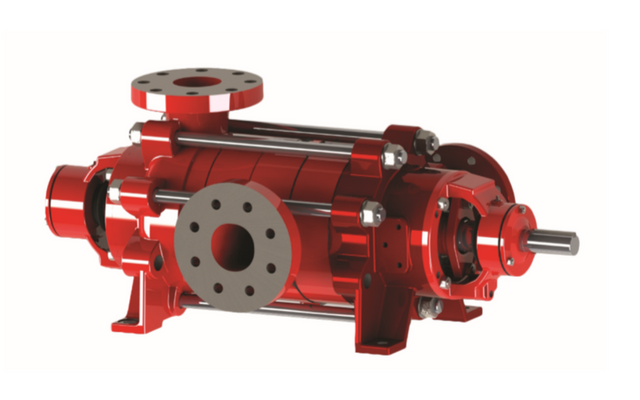
SPP Pumps is the first company to offer FM Approved multi-stage multi-outlet (MSMO) pumps. Using multiple impellers to generate more head than a single impeller, MSMO pumps are used in fire protection systems in most tall buildings including offices, hospitals and hotels.
MSMO pumps offer many benefits: buildings need fewer pumps; pipework and valves are reduced; the need for water storage tanks on intermediate floors is eliminated; and the loading on the building is reduced. The cost and space saving implications are significant: power requirements are lower, pump rooms can be smaller and, in line with new EU legislation, there is no need to use pressure reducing valves to prevent over-pressurisation of sprinkler heads.
Driven by electric motors or diesel engines, SPP MSMO pumps are available to satisfy any LPCB specification for automatic sprinkler protection in high rise and multiple storey buildings.
Typical Installations:
• Offices
• Hotels
• Residential Buildings
• Tunnels
• Mixed Use Buildings
Typical Applications:
• Sprinkler systems
• Hydrant systems
• Deluge systems
• Monitor systems
• Water curtains
Fire Protection Multi-Stage Multi-Outlet Pumps
Multi-Stage Multi-Outlet Pumps Per NFPA 20
Definitions
Multistage Multiport Pumps: 3.3.44.11* A multistage multiport pump is a single-driver pump with multiple impellers. These impellars operate in series where the discharge from each impeller, excluding the last impeller, is the suction for the next impeller. Discharge ports are provided after multiple impellers.
The Difference Between The MSMO And Fire Pumps Arranged In Series: A.3.3.44.11 This pump functions similarly to fire pumps arranged in series. What is the main difference between a multistage multiport pump and fire pumps arranged in series? Pumps arranged in series require individual drivers. Also, there is no shutoff valve between the impellers on a multistage multiport pump.
General Requirements
Shutoff Valve: 4.8.2 A shutoff valve is not required between the impellers of a multistage multiport pump.
Discharge Compontents: 4.16.2 The discharge components for all ports should consist of the following: pipe, valves and fitting that extend from the pump port discharge flange to the system side of the discharge valve for that specific port.
Electric-Drive Controlls And Accessories
Pressure-Actuated Switch: 10.5.2.1.1.2 A dedicated pressure-actuated switch or electronic pressure sensor having adjustable high- and low-calibrated set-points should be provided for all discharge ports, as part of the controller.
Pressure Recorder: 10.5.2.1.1.3 A dedicated pressure recorder shall be provided for each discharge port of the pump as part of the controller. This pressure recorder shall record the pressure in each fire pump controller pressure-sensing line at the input of the controller.
Engine Drive Controller Pressure-Actuated Switch: 12.7.2.1.1.2 A dedicated pressure-actuated switch or electronic pressure sensor with adjustable high- and low-calibrated set-points shall be provided for each discharge port of the pump as part of the controller.
Pressure Recorder: 12.7.2.1.1.3 A dedicated pressure recorder should be installed to sense and record the pressure in each fire pump controller pressure sensing line at the input of the controller. This shall be provided for each discharge port of the pump as part of the controller.
The pressure actuated switch described above in 12.7.2.1.1.2, which refers to 12.7.2.1.1.1, does not apply to a nonpressure-actuated controller, where the pressure-actuated switch or pressure responsive means shall not be required.